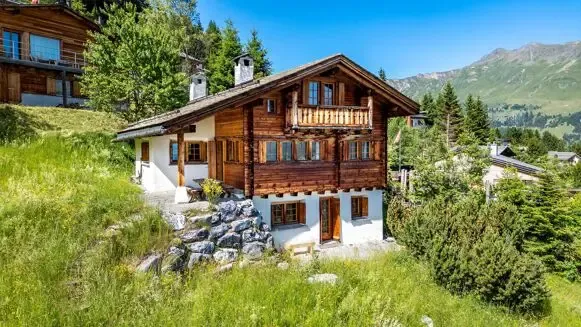Are Alpine Luxury Property Prices Surging?

Synopsis
Key Takeaways
- Alpine property prices have surged by 23% over five years.
- 73% of HNWIs are considering full-time residence in the Alps.
- Andermatt leads the Knight Frank Alpine Property Index with 14.6% annual growth.
- About 44% of buyers target homes under 2 million euros.
- Climate resilience is a key factor in buying decisions.
Mumbai, Oct 23 (NationPress) The alpine property market in Europe is showing remarkable growth, consistently outperforming global luxury market trends. According to recent findings, the average prices of alpine homes have surged by 23 percent over the past five years, driven by a significant increase in year-round demand, the rise of remote work, and a heightened interest in permanent mountain living.
The Knight Frank Alpine Property Index has experienced a year-on-year increase of 3.3 percent, with notable contributions from Andermatt (14.6 percent), Davos (10 percent), and Cortina d’Ampezzo (10 percent), showcasing the region's enduring strength and growing global appeal.
As per the report, an impressive 73 percent of high-net-worth individuals (HNWIs) surveyed are now considering full-time residence in the Alps. This trend is fueled by flexible work arrangements and a renewed emphasis on wellness, nature, and community.
Leading the Knight Frank Alpine Property Index, Switzerland’s Andermatt boasts a remarkable annual growth rate of 14.6 percent and is free from significant ownership restrictions.
Kate Everett-Allen, Head of European Residential Research at Knight Frank, stated, “The alpine property market has transitioned from being seasonal retreats to year-round havens. The influx of permanent residents, coupled with increased summer tourism, is redefining what it means to own property in the mountains.”
While many luxury residential markets have stabilized, the Alps continue to offer both lifestyle enhancements and long-term capital resilience. With regulatory changes and the upcoming 2026 Olympics, new investment dynamics are emerging that cannot be overlooked, according to Everett-Allen.
Millennials are at the forefront of this trend, with 80 percent expressing interest in full-time living in the Alps.
Approximately 92 percent of respondents feel either very confident or somewhat confident about the long-term value of their investments. Moreover, 44 percent of HNWIs are looking for homes priced below 2 million euros, indicating that the Alps are accessible to a broader range of buyers.
Nearly half of buyers are now considering climate resilience in their purchasing decisions, with Val Thorens, Val d’Isère, and Zermatt leading the Knight Frank’s Alpine Sustainability Index.










